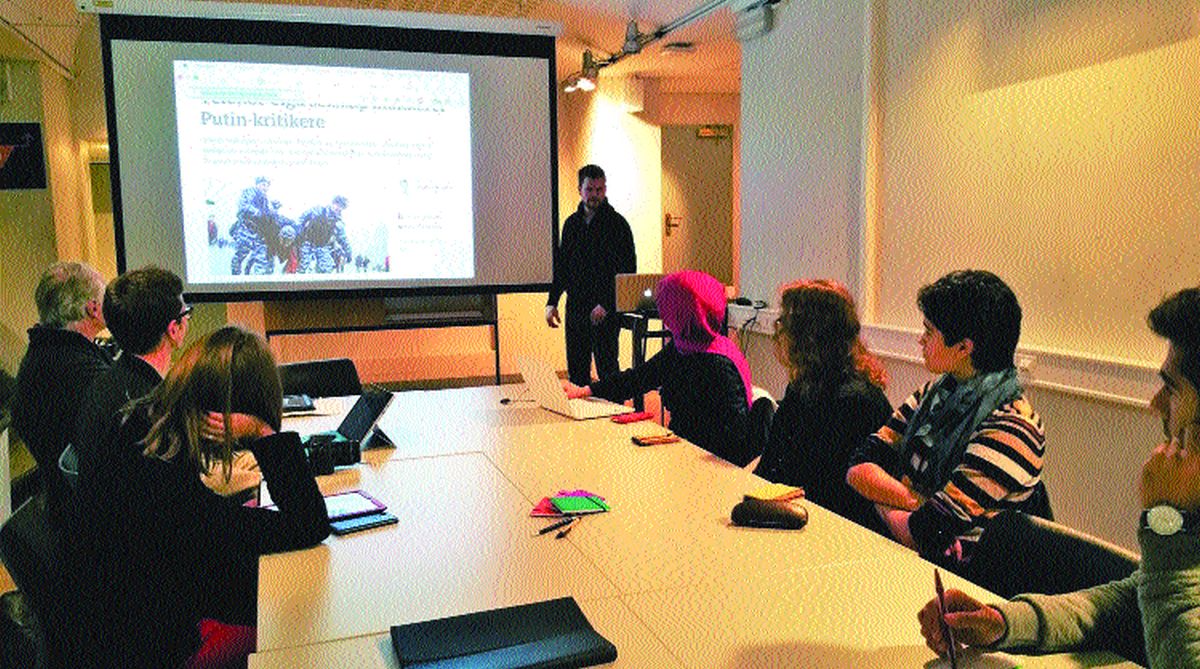Writing is time-consuming, pressure of quantity affects quality: Juhi Chaturvedi
National Award winning screenwriter Juhi Chaturvedi who wrote celebrated films like Vicky Donor, was at the 20th edition of FICCI FRAMES on Thurdsay.

The annual media business event FICCI Frames in Mumbai comes out with a status report on the world of media and entertainment in India. The latest one of March says that the size of the Indian media and entertainment industry is around Rs1.55 lakh crore employing around 12 lakh people, directly and indirectly, with 13 per cent year-on-year growth, much higher than the GDP growth-rate of seven per cent nationally.
Since there is a new talent entry of more than half a lakh people annually, the immense need of professionally trained creative work-force remains alive year after year and stalwarts lament the lack of requisite skills. What sort of education and skills are the stalwarts expecting among the future professionals in the field of media and communication? Many FICCI Frames 2018 panellists expressed views on talent grooming.
Journalism learning: The major strength of upcoming media courses must lie on the introduction to every channel of communication (online, offline, on-air, on-ground and on-mobile) and every media platform (television, newspaper, radio, portal, outdoor, events, mobile). There should be an exploration of every segment of Indian media and communication with their recent trends, turnover, recruitment and attrition factors, skills-sets needed, and infra-structure required at the start of media learning.
Advertisement
Other areas that need attention include convergence in media technologies — how shooting, editing, sound and graphics are getting integrated on one platform. Also they must aware about the challenges of winning consumer loyalty in integrated media platforms. Nowadays everyone has exposure to multiple media and is not loyal to any one format. Though this has made reaching out to everyone easier, commanding their loyalty is becoming harder by the day.
For journalism, the new age media courses must include seamless multi-media content creation and presentation, content-technology-business integration, multi-media ownership and convergent media production skills. The current requirement is platform-agnostic or medium-neutral journalism where content produced can be seamlessly used across print, cyber, radio and television.
Alongside command over general knowledge, in-depth analysis and professional skills to present a story with the use of right words, stills, audio only and audio-visuals holds immense value for a budding journalist. Thus media education should be oriented towards future as we move into the age of mobile journalism.
Integrated brand communication learning: The process of creating a specific perception of brands in the mind of consumers is termed branding and marketing communication. This must reach the target audience in various possible ways and touch-points. It may include the seamless integration of online, offline, on-ground, on-air and on-mobile communication as medium. To create it, professionals must have a concerted understanding of all the media platforms, communication functions and fundamentals of brand management among others. Such learning requires case-studies from various sectors of the economy. For example, how India has been branded through Incredible India campaign. One has to be creatively inclined, technologically savvy, and business or measureable results oriented.
Brand communications cover advertising management, market research and consumer insights, public relations, events and experiential marketing, corporate communication, along with digital and social branding.
Entertainment learning for tomorrow: Entertainment is a vast field encompassing films on screen, web; audio on podcast, radio; fiction or non-fiction on television, and live entertainment. The new age entertainment professional must consider a lot of factors to produce content for such varied platforms.
The necessary skills include screen-writing, direction, cinematography, graphics, post production, sound design, an also branding, marketing and sales of entertainment services. Holistic knowledge of all of these, and expertise in one specific domain is what will keep the young professionals in good stead in near future.
Experiential brick and portal learner-centric pedagogy: Nowadays, integrating digital tools into education, from school to university, is must. There is a need to enumerate various educational pedagogy and approaches, and then move to learn in details, with cases and tasks to apply, the concept of synergising between the class room/library brick and mortar education with internet/cyber-based click and portal learning and experiential learning by doing. This experiential brick and portal approach is all the more significant in creative domains like media, communication and design among others. In these domains, knowledge is evolved from practice and practice evolves every day. Today’s creative education exhibits in great details how we can move from a teacher/syllabus-centric education to learner/learning-centric education: from school to university, and how teachers have to be facilitators at the minimum and mentors at the best. This revolutionary approach to teaching and learning of creative professions is at the heart of our education in a futuristic media and communication school, whether at Bachelor’s or at Master’s levels.
The writer is head, school of media, Pearl Academy, Delhi and Mumbai
Advertisement